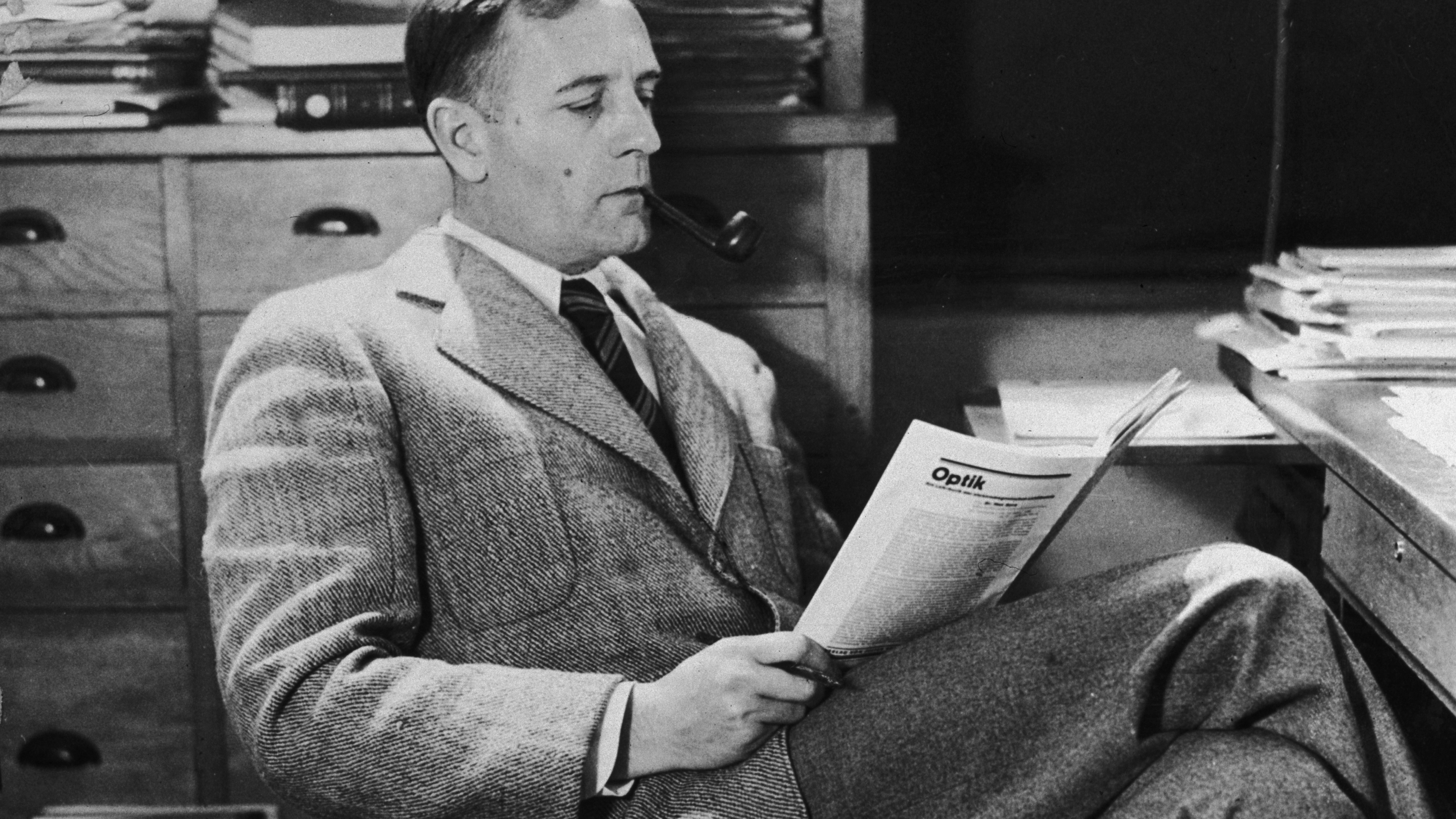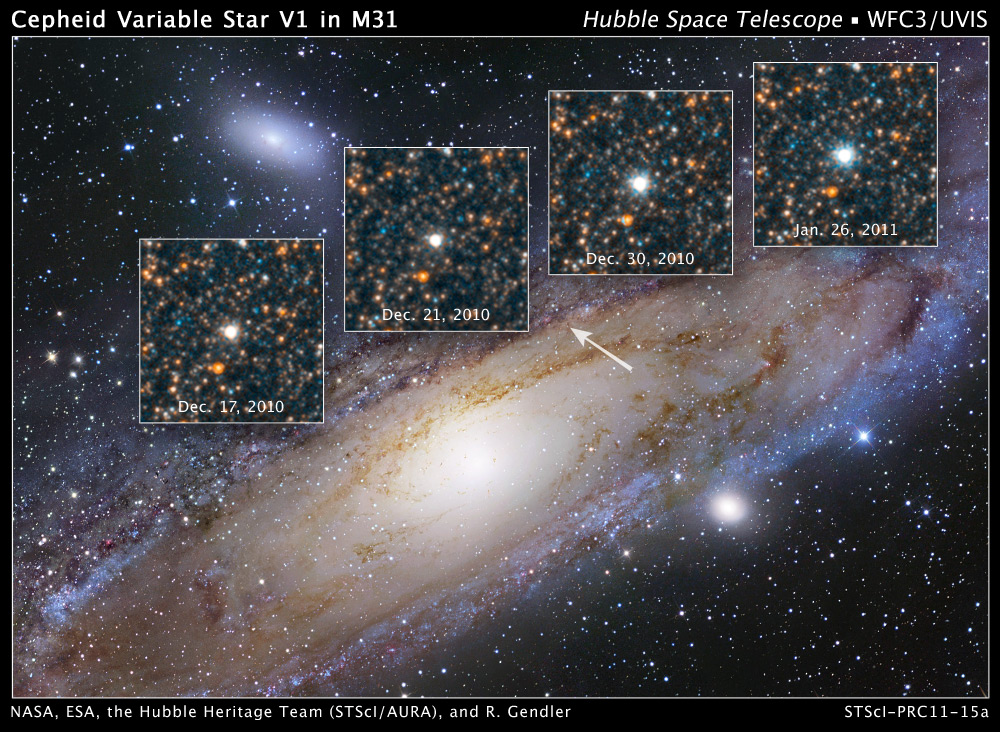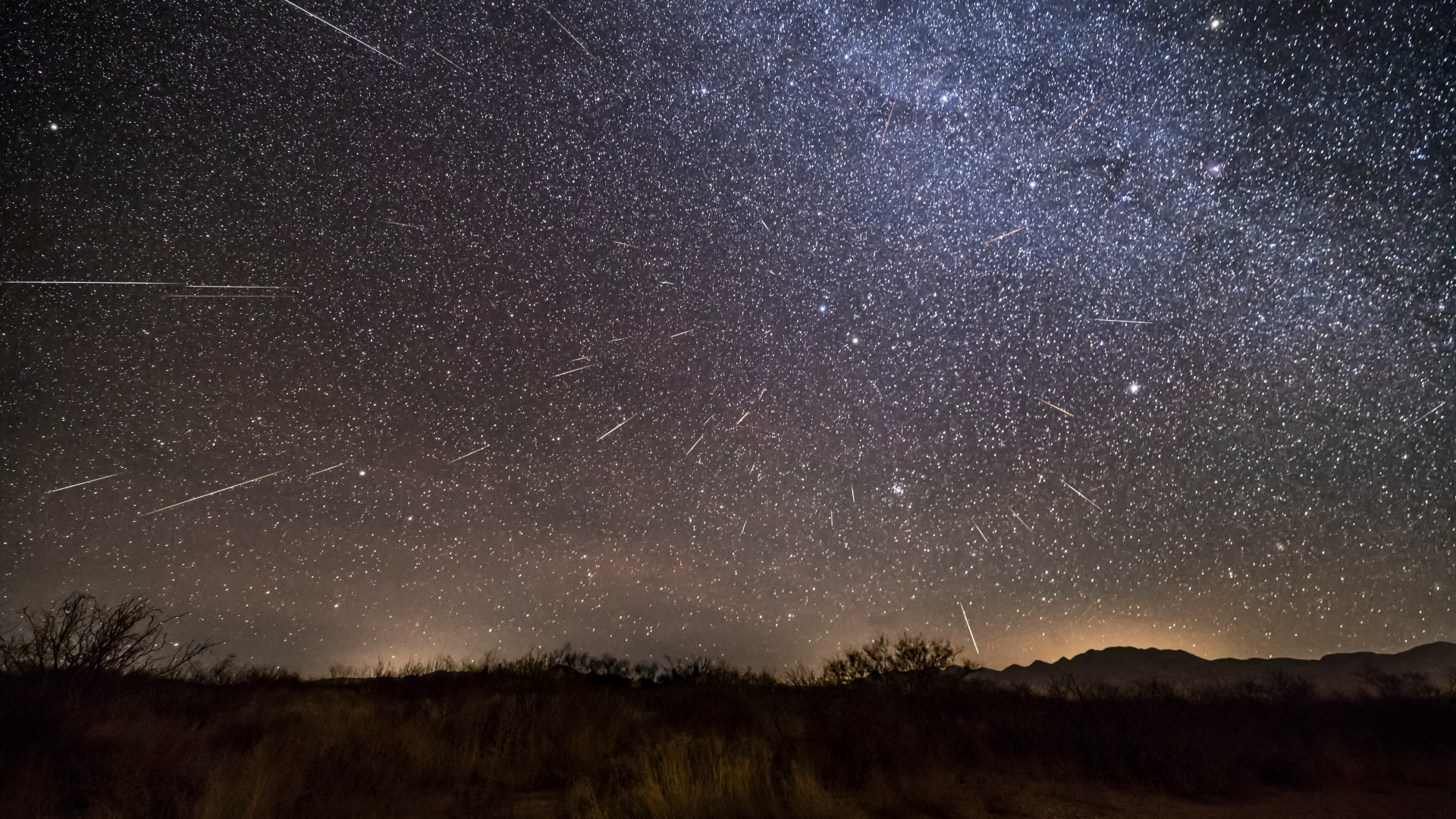100 years ago, Edwin Hubble proved our Milky Way galaxy isn't alone
100 years ago, Hubble revealed a universe of galaxies that existed beyond ours — but he couldn't have done it without a little help.

If we could go back 101 years, we would encounter a time when scientists still thought the Milky Way was the entirety of our universe. But, if we went back 100 years instead, we would find most scientists agreeing that this isn't true. Somewhere in between, humans realized the universe is much larger than our Milky Way — that the spiral nebulas visible through telescopes were, in fact, other galaxies in their own right. The scale of the cosmos had expanded dramatically virtually overnight.
According to historical records, we have one man to thank for this: Edwin Hubble. That's certainly partly the truth, but he couldn't have done it without the genius of others around him who paved the way for his discovery.
"It's easy to romanticize Hubble and his discovery of the universe beyond the Milky Way galaxy, but his work really stood on the shoulders of a number of people," said Jeff Rich, an astronomer at the Carnegie Science Observatories, in a press conference at the 245th meeting of the American Astronomical Society in Maryland.
That Rich was presenting the story of Edwin Hubble at the January 2025 AAS meeting was symbolic, for it was at the 33rd meeting of the AAS, a century ago on January 1, 1925 in Washington, D.C., that Hubble's work was officially presented for the first time.
Rich describes the discovery of the universe beyond the Milky Way as being a revelation centuries in the making, discussing how our understanding of our place in the cosmos gradually coalesced in time with new discoveries. The two people whose shoulders Hubble stood on the most, though, were Henrietta Swan Leavitt and Harlow Shapley.
The most important stars in the universe
Leavitt worked at Harvard College Observatory as a "computer" who would analyze photographic plates taken by Harvard's telescopes. In particular, Leavitt would scrutinize images of the Small and Large Magellanic Clouds, and had identified 1,800 variable stars within them. In two papers written by Leavitt in 1908 and 1912, she was able to determine that many of these variable stars had a distinctive period–luminosity relation. In other words, she realized that the amount of time it took for the stars to regularly pulsate and appear brighter and fainter as they contracted and expanded was dependent upon how luminous they were.
This was a vital discovery. Suppose you found one of these variables, subsequently called Cepheid variables. You might not know how far away it was, but based on the Cepheid's period of variation, you could calculate how intrinsically luminous the Cepheid was. Then, all you'd need to do to work out how far away the star is would be to compare its true luminosity with how faint it appeared to be in the night sky. Even today, Leavitt's period–luminosity relation is a key concept scientists use when measuring distances in the cosmos..
Breaking space news, the latest updates on rocket launches, skywatching events and more!
Meanwhile, given his foundational role in Hubble's story, it is ironic that Harlow Shapley didn't believe there was anything beyond the Milky Way. Back at the beginning of the 20th century, telescopes were not powerful enough to resolve individual stars in other galaxies, so spiral galaxies appeared more like spiral smudges, and were referred to as spiral nebulas. Shapley suspected the spiral nebulas to simply be stars forming on the edge of the Milky Way.
Shapley's goal was to measure the size of the Milky Way — and hence the universe as he saw it — by creating the first official cosmic distance ladder. Cepheid variables that he identified in our galaxy were the first rung. Next were RR Lyrae stars, which are another breed of variable star with a similar period–luminosity relation to Cepheids and whose distances could be calibrated by comparing them to the Cepheid variables. Finally, he used the RR Lyrae variables to calibrate the distance to ordinary massive, luminous stars near the edge of the Milky Way.
Shapley determined that the Milky Way was 300,000 light years across, and that our solar system was 50,000 light-years from the center. While today we know the more accurate values are 100,000 light-years and 26,000 light-years, respectively, Shapley's result represented the first use of a cosmic distance ladder. Shapley even took part in the "Great Debate" with fellow astronomer Heber Curtis at the National Academy of Sciences in Washington D.C. in April 1920, which discussed the nature of the spiral nebulas. Curtis argued that the spiral nebulas were galaxies in their own right, but said that the Milky Way was only 10,000 light years across. Shapley argued the opposite.
Hubble enters the fray
Edwin Hubble joined the Mount Wilson Observatory team in California in 1919, just two years after the observatory’s Hooker Telescope, which was the largest telescope in the world at that time, had seen first light.
"[Hubble's] breakthrough was made possible by the 100-inch Hooker telescope at Mount Wilson,” said Rich. “Hubble was able to make his discovery because he had access to this state-of-the-art technology.”
The Hooker telescope was the brainchild of the observatory’s director, George Ellery Hale, and was designed to, among other things, solve the spiral nebulae puzzle, thanks to a generous $45,000 gift from Californian philanthropist John Hooker.
Before we continue, we should also mention one other important character in this story: Milton Humason. Originally hired as a "mule skinner," taking building materials and equipment up Mount Wilson via mule while the observatory was still under construction, he subsequently became the observatory's janitor and then an assistant to the astronomers using it. Humason and Hubble became almost inseparable at the telescope, while Humason made many astronomical discoveries in his own right despite not having a Ph.D., and deserves to share in much of the credit that Hubble receives.
So, with the stage set, Hubble and Humason set to work observing spiral nebulas with the Hooker telescope. In 1923, they succeeded in taking an image of the Andromeda spiral nebula, Messier 31, and that revealed something very special indeed.
"Hubble was so excited about this image that he wrote 'VAR!' on the black and white glass plate, because he had seen evidence of a Cepheid variable," said Rich. That Cepheid variable star became known simply as ‘V1’. "He knew, because of work done by Henrietta Leavitt and Harlow Shapley, that this meant he could measure the distance to a spiral nebula for the first time."
And measure it he did. He calculated a distance of 930,000 light-years, which is less than half the real distance of 2.5 million light-years, but the limitations of Hubble's rudimentary calculation notwithstanding (the cosmic distance ladder is still being refined even today), it clearly showed that the Andromeda spiral existed beyond the confines of the 300,000 light-years that Shapley measured for the Milky Way. Messier 31 was not a spiral nebula. It was a spiral galaxy.

Hubble wrote to Shapley, informing him of his discovery. When Shapley read his letter, he commented, "Here is the letter that destroyed my universe."
Hubble 'leaked' the news of his discovery to the New York Times in November of 1924, which is why the presentation at the AAS the following January, actually given by astronomer Henry Norris Russell and not Hubble himself, was only the official reveal — unofficially, though, people already knew about it.
Today, we take for granted that the universe is filled with galaxies, some spirals like the Milky Way and Andromeda, some giant ellipticals, and others tiny dwarfs. At last count, up to 2 trillion galaxies are estimated to exist within the visible universe. And yet, Rich comments how Hubble's epochal discovery was actually relatively recent.
"One hundred years is not that far away," he said. Indeed, there are a few people in the world even older than that, born in a time before we knew other galaxies existed. "This is really a lesson of how much things have changed and how discoveries can come at us fast."
Today, the photographic plate that captures the Cepheid variable V1, with Hubble's scrawled "VAR!" in the corner, is a precious relic of discovery, the kind of thing a scientific Indiana Jones might go in search of in a thousand years' time. Fortunately, you don't have to embark on quite such an arduous journey to find it. Usually kept under lock and key, the plate has been let out for air and is currently on display for a few months at the Mapping the Infinite: Cosmologies Across Cultures exhibition at the Los Angeles County Museum.
As for Hubble, he didn't stop there. His subsequent tuning-fork diagram of the shapes of galaxies remains a classic teaching tool for astronomers, and even though the evolution of galaxies that the tuning fork depicts is back to front, professional astronomers still use the tuning fork's nomenclature of "early" and "late" galaxies.
Then, in 1929, Hubble revealed that almost all the other galaxies in the universe were moving away from us, based partly on redshift measurements by fellow astronomer Vesto Slipher, and in line with theoretical work by the Belgian physicist and priest Georges Lemaître, who derived what has become known as the Hubble–Lemaître law describing the expansion of the universe.
In the space of five years, we'd gone from thinking the Milky Way was everything, to unraveling an infinite, expanding universe. It was quite the paradigm shift and, coming on the back of Albert Einstein's General Theory of Relativity, released in 1915, and around the same time that the world's greatest physicists, led by Niels Bohr, were figuring out the realm of quantum physics, it was a keystone of a transformative era in science that has shaped our current understanding of the cosmos. With new mysteries such as dark matter, dark energy, the search for a quantum theory of gravity, the Hubble tension and the cause of the Big Bang all perplexing physicists, now would be a great time for another transformation in science akin to that of a century ago.

Keith Cooper is a freelance science journalist and editor in the United Kingdom, and has a degree in physics and astrophysics from the University of Manchester. He's the author of "The Contact Paradox: Challenging Our Assumptions in the Search for Extraterrestrial Intelligence" (Bloomsbury Sigma, 2020) and has written articles on astronomy, space, physics and astrobiology for a multitude of magazines and websites.
